Your cart is currently empty!
Head Injuries in Young Children: When is it Serious?
If your child just bumped his head and you’re anxiously searching “when to worry about head injuries in young children,” you have come to the right place.
I, likewise, had a concerning head-bumping experience with my child last week. She fell off of a chair and hit her head on our kitchen tile floor.
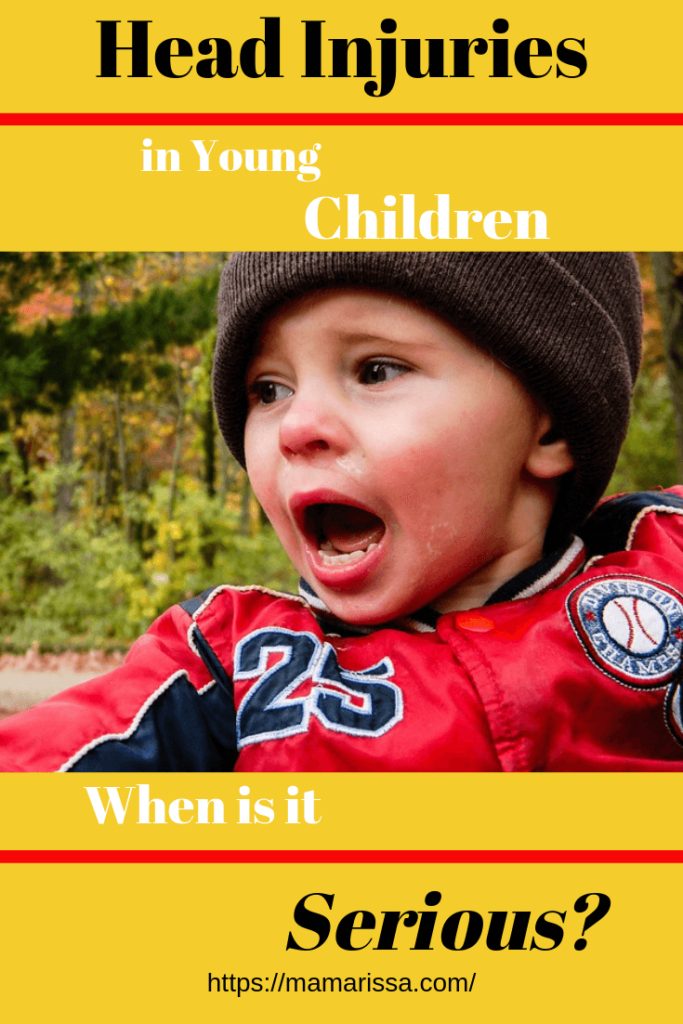
She has, of course, fallen and hit her head many times as all children do. But oftentimes she catches herself enough to keep from getting injured.
She usually doesn’t even cry, and if she does, she can be consoled and calms down within a minute or two.
This time was a little different, because I saw her head slam against the floor, and she was crying harder than normal.
When holding and comforting her still hadn’t completely calmed her down after about 20 minutes of crying, I started to worry. She was even refusing to eat or nurse which is pretty unusual.
So, after leaving a message for the nurse at her pediatrician’s office, I turned to Dr. Google for advice on head injuries in young children. What I found surprised me and it just might surprise you too!
This post is for informational purposes only. I am not a medical professional and the following information is not intended to replace consultation with a doctor. You should consult your child’s pediatrician any time you are concerned about his or her health.
Prevalence of Childhood Head Injuries
If you have a child, chances are, you have seen and/or will see her fall and hit her head countless times as a youngster. This can cause a few grey hairs for us parents, and for good reason.
Sadly, falls are the leading cause of Traumatic Brain Injuries (TBI’s) in children ages 0-4, and children this age are at a high risk of falling (Source).
If you have spent even a limited amount of time around a toddler, the reasons for frequent head injuries in young children are obvious. They are still learning how to use and coordinate their bodies and they don’t fully grasp the law of gravity yet.
Although it makes sense, the number of injuries resulting from childhood head trauma are a little frightening. Every year 564,000 children are treated and released from the ER for brain injuries and an additional 62,000 children require a hospital stay (Source).
However, despite those big numbers, the good news is that head bumps most often only result in short-lived crying episodes and leave little to no lasting evidence. A comforting 90% of head injuries in young children are minor (Source).
But sometimes, when your munchkin is very distraught or is sporting an ugly bruise, it can be hard to know if any real damage has been done to that precious little noggin.
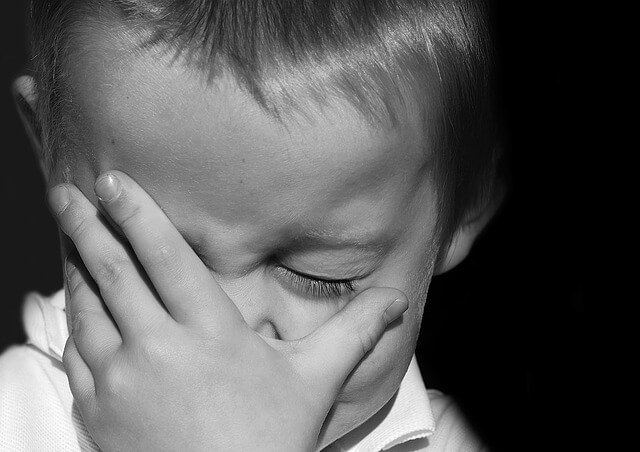
While it’s not healthy to worry over every little tumble, it is important to watch for and respond to signs of serious head injuries in young children in the hours and days following hard bumps, collisions and falls.
So here is the information you need to know in order to determine how serious that knock on the head is.
What is Normal After a Head Injury
Before you work yourself into too much of a panic (which will only make the situation worse), you need to know what children’s normal responses are to head bumps that cause minor injury.
It is also helpful to understand what defines a head injury as opposed to a head bump without injury that may have simply scared your little one.
According to SpinalCord.com, there are certain rules for a bumped head to qualify as an injury. On the minor end, a head injury can involve a cut, a bruise, a brief altered level of consciousness and even one incidence of vomiting.
I was pretty surprised that vomiting is considered a normal response to a minor head injury, but according to Dr. Sears, vomiting once or twice can happen simply as a result of intense crying or the shock of the bump.
Dr. Sears also does not recommend waking your child to check on him if there is no indication that the injury could be serious. Instead, he advises that parents check their child’s breathing and skin color every so often during sleep to determine if anything seems off.
Basically, as long as your child seems to be otherwise acting completely normal and is not in severe pain, there is probably little cause for concern over his head injury.
But what if, like my child, your little one is inconsolable but has no other concerning symptoms?
First of all, always follow your gut if you feel something isn’t right. If you’re not sure how to proceed, call your child’s doctor for advice.

But if nothing seems to be out of the ordinary besides the persistent crying, check for other possible contributors to your little one’s distress.
Is she overtired – a condition often exacerbated by minor injuries – or possibly feeding off of Mommy’s emotions?
In my daughter’s case, the culprit turned out to be overtiredneas. Although it was close to her nap time when she fell, I hadn’t realized just how tired she was until bumping her head depleted what was left of her stamina.
I kept an eye on her while she slept and she woke up acting completely normal and pain-free.
It’s easy sometimes to overreact to the little things we notice when we are worried about our babies, but try to keep your focus on whether or not your child’s behavior is the same as it generally was before the head bump.
What is Not Normal After a Head Injury
If you notice anything unusual about your child’s responses or behaviors after a blow to the head, there may be more to his head injury than meets the eye, even if there is no outward sign of injury.
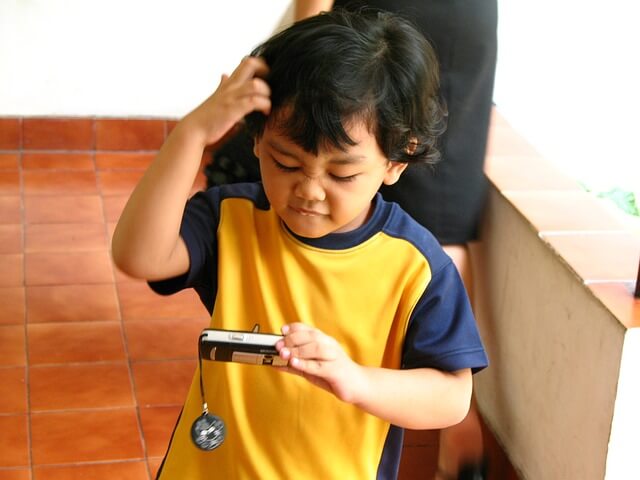
Watch for any of the following symptoms in the hours and days after the injury to determine if your child needs medical treatment.
Verbal Children
- Headaches
- Blurred vision
- Repeated vomiting
- Loss of consciousness for more than a few seconds
- Extreme fatigue
- Deep or long lacerations
- Indent in the scalp
- Sensitivity to noise and light
- Clumsiness
- Dizziness or lightheadedness
- Ringing in the ears
- Weakness/lack of coordination on one side of the body
- Slurred speech
- Aggressive behavior
- Clear fluid or blood draining from the nose or ears
- Bruising around the eyes and behind the ears
Preverbal Children
- Persistent crying or irritability in the hours and days following the injury
- Dilated or asymmetrical pupils
- Repeated vomiting
- Loss of consciousness for more than a few seconds
- Extreme fatigue
- Deep or long lacerations
- Bulge in the soft spots on baby’s head
- Indent in the scalp
- Sensitivity to noise and light
- More wobbly/unbalanced than normal
- Weakness/lack of coordination on one side of the body
- Clear fluid or blood draining from the nose or ears
- Bruising around the eyes and behind the ears
Symptoms of a mild brain injury (such as a concussion) do not always immediately appear, so it is wise to be vigilant for a few days after the head bump.
When a Head Injury is an Emergency
Any of the symptoms previously listed should prompt you to, at the very least, consult your child’s doctor. But some situations specifically require more immediate help.

If your child has any of the following symptoms, rush her to the emergency room or call an ambulance:
- Seizures
- Vomits multiple times
- Excessive bleeding that can’t be stopped
- Difficult to rouse
- Irregular breathing
- Anything that indicates a neurological injury has occurred
- Was involved in a car accident, was hit very hard in the head by a hard object, or fell from a great distance (depending on age, 3-5 feet or more)
Most likely, if there is an emergency need for treatment, you will know.
The Cure for Most Head Injuries
While the thought of a brain injury is terrifying, most of the time, a few cuddles are the only treatment necessary when your child hits her head – even on hard surfaces. Kids have pretty sturdy heads.
If the cuddles are not enough to soothe her and there is no indication that something serious is wrong with her, consult her doctor for further direction.
But as long as she calms down and shows no sign of having any lingering problems, it’s most likely just one of many opportunities for your child to learn about the force of gravity or continue practicing her balancing skills.
And the cure for you, Mama? Well, unfortunately, worrying is an incurable chronic condition when it comes to the health and well-being of our children.
But educating yourself on what is normal is the best way to stop the worry before it starts. Otherwise, experience will teach you – with time – when you need to be concerned and when you can relax.

What are some of the memorable experiences you have had with head injuries in young children? Share about them in the comments!
If you found this Information helpful, you may also want to read my post on What Every Mama Needs to Know About Young Children and Choking.
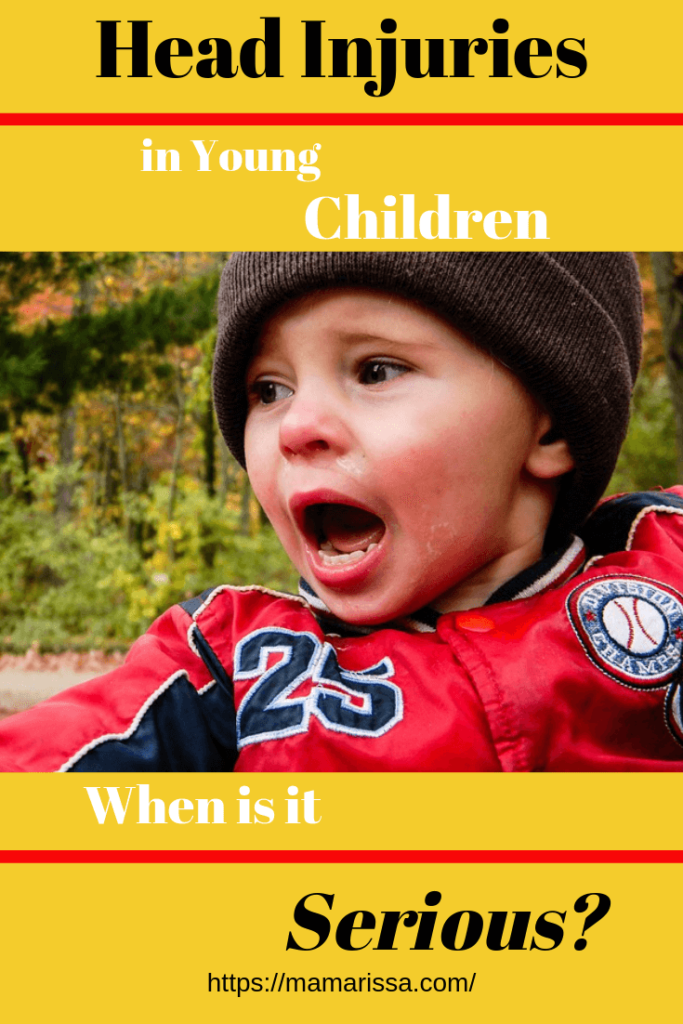

One response to “Head Injuries in Young Children: When is it Serious?”
[…] Active youngsters are prone to injuries – read this post on how to know when a head injury is serious. […]



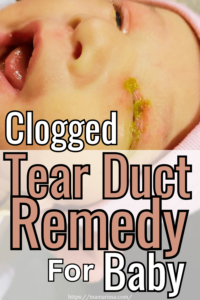
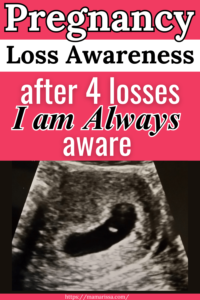

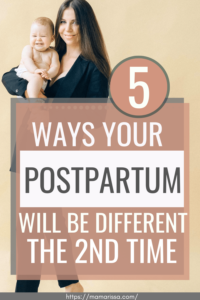



Leave a Reply